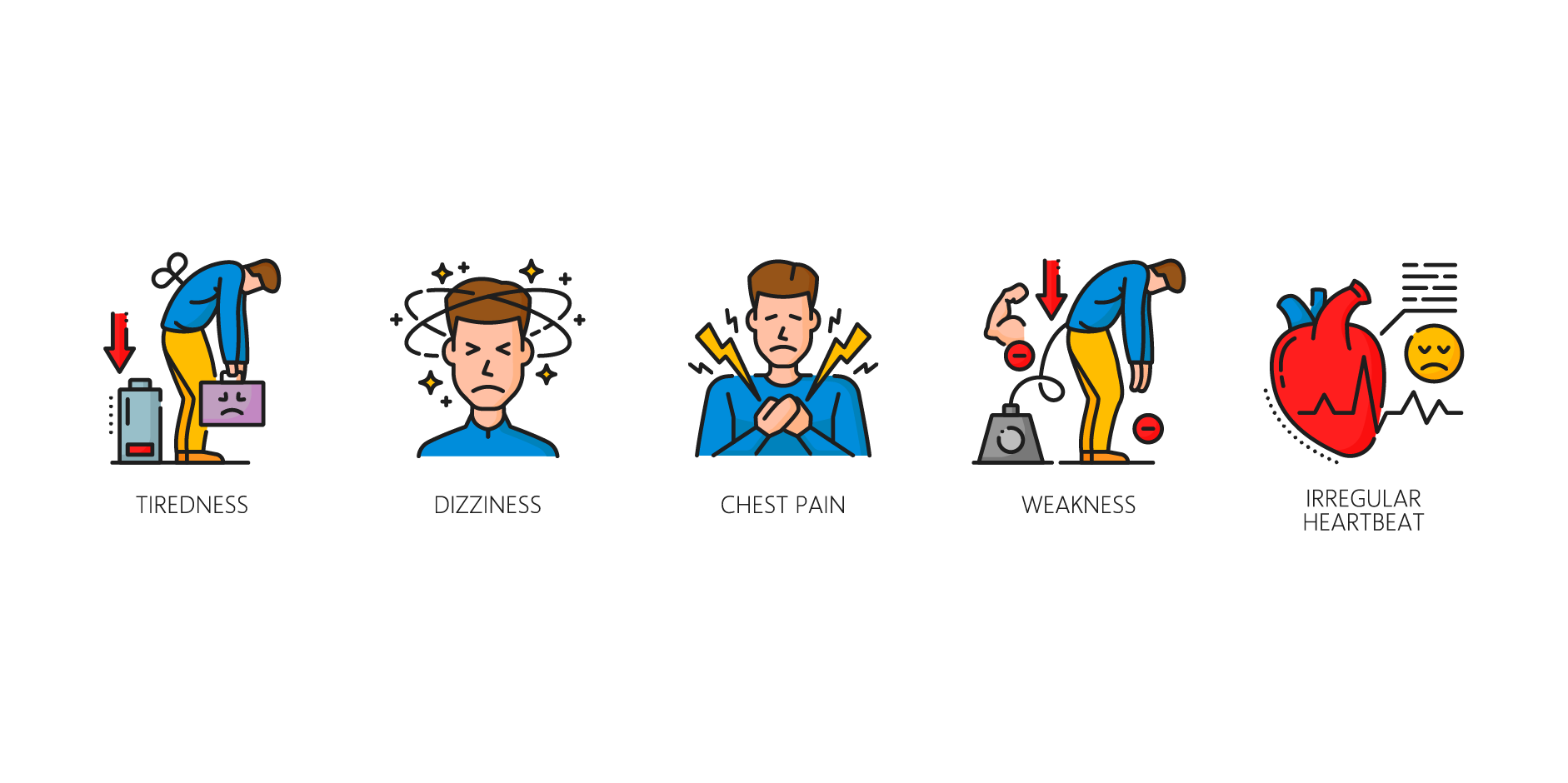Content on this page:
Content on this page:
Clinical Presentation
Signs and Symptoms
Primary symptoms of anemia include dyspnea (exertional or at rest),
fatigue, palpitations, headache, faintness or lightheadedness, tinnitus,
anorexia, GI disturbances, and loss of libido. Symptoms of
severe anemia include lethargy, confusion, tachycardia, retinal hemorrhage that
may lead to life-threatening complications such as congestive heart failure,
angina, arrhythmias and/or myocardial infarction. Symptoms can be due to
decreased oxygen delivery to tissues and in patients with acute and marked
bleeding, the added insult of hypovolemia.
Iron-deficiency anemia is commonly asymptomatic but may cause impaired
cognitive development in preschool-aged children, and
diminished work productivity and quality of life and cognitive and
behavioral problems in adults. Among pregnant
women, it is associated with increased risk of abnormal thyroid function,
preeclampsia, eclampsia, preterm labor, placental abruption, cesarean delivery,
low birth weight, prematurity, postpartum anemia, and blood transfusion. Other
symptoms of iron-deficiency anemia include paleness, weakness, irritability, varying degrees of fatigue, lethargy, chills,
dizziness, tinnitus, palpitations, dyspnea, restless legs syndrome, and
exercise intolerance.
 Anemia - Iron-Deficiency_Initial Assesment
Anemia - Iron-Deficiency_Initial AssesmentHistory
History should focus on possible etiologies and may include queries about diet, weight loss, medication (eg Aspirin, nonsteroidal anti-inflammatory drugs), GI symptoms, H pylori infection, history of pica or pagophagia, signs of blood loss, surgical history, family history of GI malignancy, history of blood donations, menstrual blood losses, and multiple pregnancies.
Physical Examination
Patients with iron-deficiency anemia are usually asymptomatic and have limited findings on physical examination (eg pallor of the conjunctivae, skin and nail beds, atrophic glossitis, angular cheilitis, spoon nails [koilonychia], tachycardia, cardiac systolic flow murmur, dry skin and hair, and alopecia). Further evaluation should be based on risk factors.
Diagnosis or Diagnostic Criteria
Anemia diagnosis is confirmed with the presence of low levels of one or more of the major RBC measurements obtained as part of the complete blood count (CBC): Hemoglobin concentration, hematocrit or RBC count. Iron-deficiency anemia diagnosis is obtained by laboratory-confirmed evidence of anemia and low iron stores via measurement of levels of serum ferritin, serum iron, erythrocyte protoporphyrin, or total iron binding capacity (TIBC, transferrin). Iron deficiency with or without anemia, may be tested using serum iron and TIBC, serum ferritin, red cell indices, percentage of hypochromic erythrocytes, reticulocyte count, reticulocyte hemoglobin concentration, transferrin saturation (TS), or soluble (serum) transferrin receptor (sTfR) level.
Screening
It is recommended for asymptomatic pregnant women to have a routine screening for iron-deficiency anemia. The defined values consistent with anemia in pregnancy are hemoglobin levels <11 g/dL in the first and third trimesters or <10.5 g/dL in the second trimester. It is also recommended for children >1 year of age to have universal hemoglobin screening and evaluation of risk factors. Risk factors include low birth weight, history of prematurity, exposure to lead, exclusive breastfeeding beyond 4 months of life, and weaning whole milk and complementary foods without iron-fortified foods.
